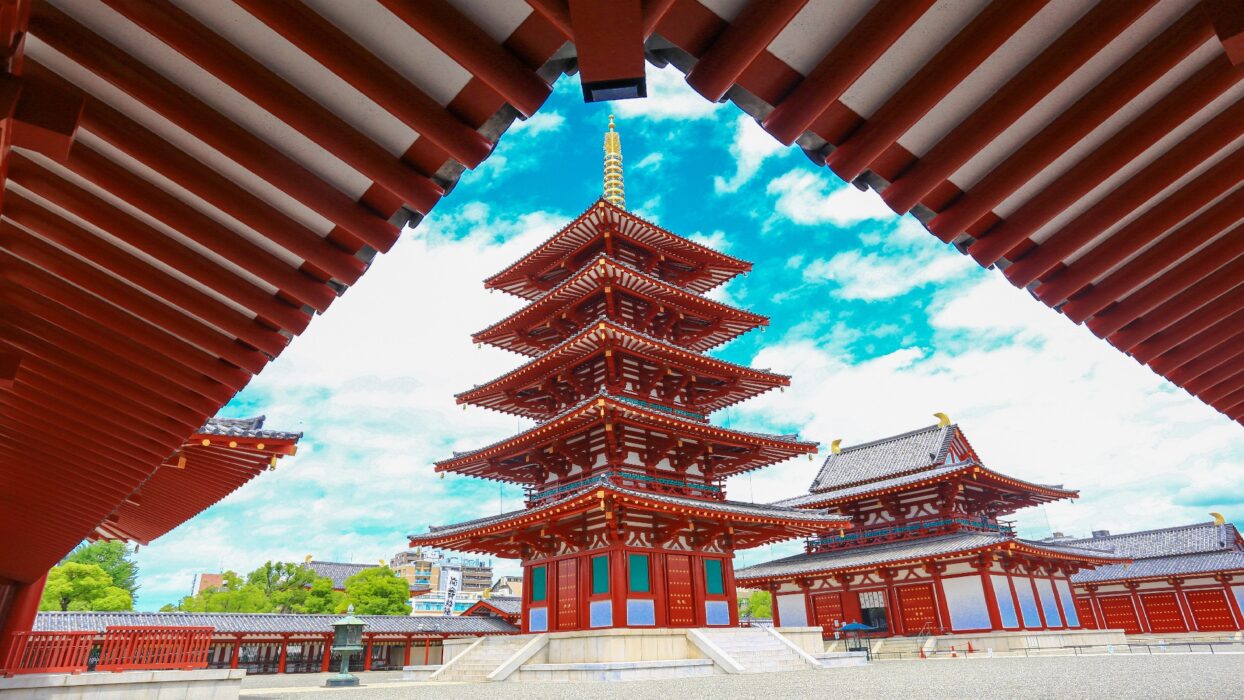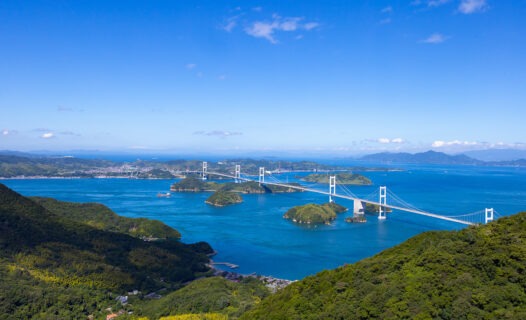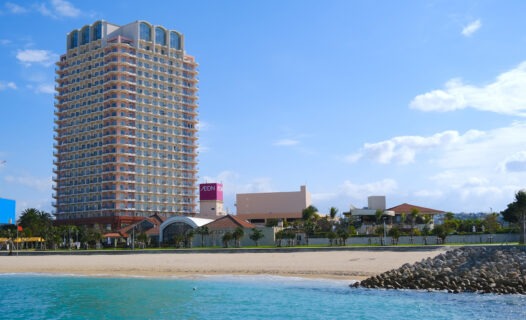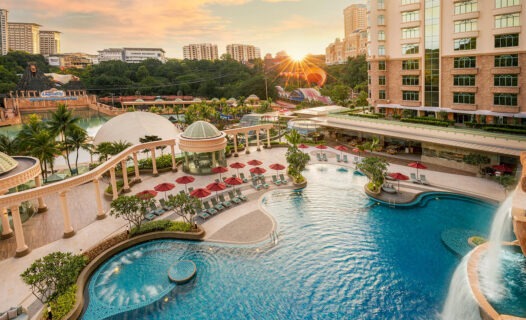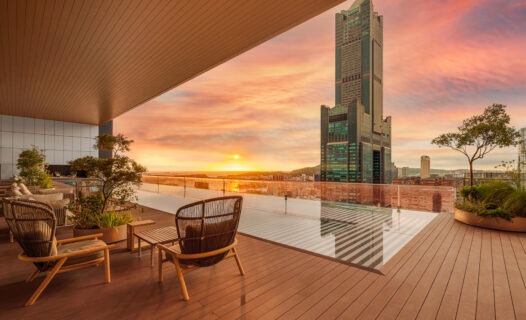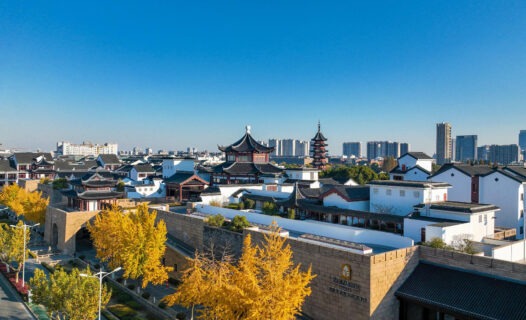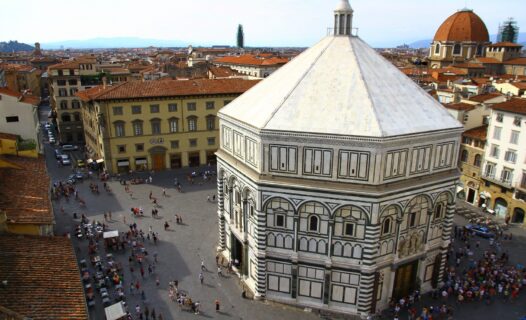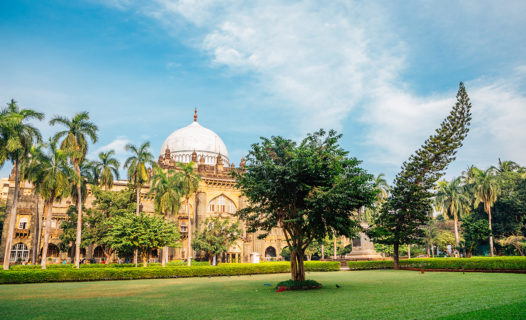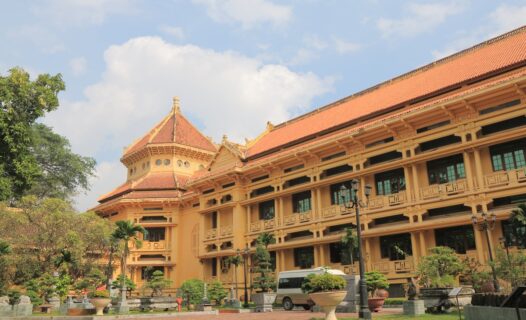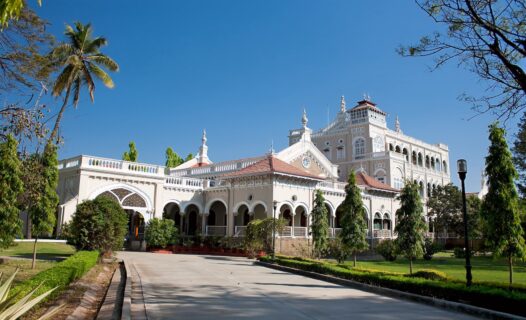Introduction
Welcome to Kiyomizu-dera Temple, one of Kyoto’s most cherished gems! Nestled in the hills of eastern Kyoto, this UNESCO World Heritage Site is not just a feast for the eyes but a treasure trove of history and culture. Known for its stunning wooden stage that juts out over the hillside, Kiyomizu-dera offers breathtaking views of the city and the surrounding landscapes, especially during the enchanting cherry blossom season in spring and the mesmerizing night illuminations in both spring and autumn.
As the seasons change, Kiyomizu-dera transforms into a canvas of natural beauty. In spring, the cherry blossoms (sakura) bloom in a spectacular display, attracting visitors from around the world. Meanwhile, the temple’s night illuminations create a magical atmosphere, bathing the ancient structure in soft lights that highlight its architectural splendor. Whether you’re a history buff, a nature lover, or a photography enthusiast, Kiyomizu-dera holds something special for everyone.
Discovering Kiyomizu-dera Temple: A Historical Overview
Stepping into Kiyomizu-dera is like stepping back in time. Founded in 778 AD by the monk Kōbō Daishi, this temple has a rich history that intertwines with Japan’s cultural heritage. The name "Kiyomizu" translates to "clear water," derived from the Otowa Waterfall that runs beneath the main hall. Visitors can drink from its streams, believed to bring health, success, and love—talk about a refreshing way to embrace spirituality!
The architectural significance of Kiyomizu-dera is nothing short of remarkable. The main hall, or Hondo, is built without the use of nails, showcasing the incredible craftsmanship of the era. Its iconic wooden stage, perched 13 meters above the hillside, offers panoramic views that change with the seasons. Did you know that during the Edo period, it was a common practice for people to jump off this stage, believing that if they survived, their wish would be granted? While this tradition has faded, it speaks volumes about the temple’s deep-rooted cultural significance.
Throughout its long history, Kiyomizu-dera has witnessed numerous historical events, including the rise and fall of emperors and the impact of wars. The temple has survived fires and natural disasters, each time being rebuilt and restored to its former glory. One lesser-known anecdote involves the temple’s connection to the famous Japanese poet Matsuo Bashō, who visited Kiyomizu-dera and penned verses inspired by its beauty. This poetic legacy adds an artistic layer to the temple’s historical narrative.
For those looking to immerse themselves further into Kiyomizu-dera’s rich past, check out our Comprehensive Travel Guide to Kiyomizu-dera. It delves deeper into the architectural marvels and historical tales that make this temple a must-visit!
Seasonal Splendor: Cherry Blossoms at Kiyomizu-dera
Ah, the cherry blossoms! If you visit Kiyomizu-dera in spring, you’re in for a treat. The temple is surrounded by a stunning array of sakura trees that bloom in a flurry of pink and white, creating a picturesque scene that seems almost too perfect to be real. The peak bloom typically occurs in late March to early April, but keep an eye on the weather, as it can vary from year to year. A little rain can actually enhance the colors, so don’t let a cloudy day deter you!
For the best cherry blossom viewing experience, arrive early in the morning to beat the crowds and enjoy a serene atmosphere. The temple grounds offer various vantage points to capture the blossoms in all their glory. One of the best spots is from the wooden stage itself, where you can frame the delicate flowers against the backdrop of Kyoto’s cityscape. Bring your camera and be ready to snap some stunning photos!
Historical bloom data suggests that the cherry blossoms at Kiyomizu-dera have been celebrated for centuries, with the tradition of hanami (flower viewing) deeply embedded in Japanese culture. This is more than just a pretty sight; it’s a celebration of the fleeting beauty of life, a theme that resonates throughout Japanese art and poetry.
To learn more about the exquisite beauty of Kiyomizu-dera throughout the seasons, check out our article Discover the Timeless Beauty of Kiyomizu-dera. It’s packed with tips and insights that will enhance your visit!
Night Illuminations: A Magical Experience at Kiyomizu-dera
As dusk falls, Kiyomizu-dera takes on a whole new persona with its spectacular night illuminations. This magical event typically occurs from mid-March to early April in spring and from mid-November to early December in autumn. The temple is beautifully lit, creating a stunning contrast against the night sky, making it a photographer’s paradise!
During these illuminations, visitors can stroll through the temple grounds and soak in the enchanting atmosphere. The play of light and shadows on the ancient wooden structures, combined with the backdrop of blooming cherry blossoms or autumn leaves, creates a mesmerizing sight that you won’t want to miss. For the best photographs, aim for the golden hour just before sunset, where the fading light adds a warm glow to your shots.
To make the most of your visit during the night illuminations, consider arriving early to secure a good spot. Weekdays tend to be less crowded than weekends, so plan your visit accordingly. And don’t forget to bring a tripod if you’re serious about capturing those stunning night shots!
For more tips on experiencing Kiyomizu-dera’s magical night illuminations, check out our guide Kiyomizu Temple: Cherry Blossoms & Night Lights. It’s filled with insights to help you navigate this enchanting experience!
Best Times to Visit Kiyomizu-dera: A Seasonal Breakdown
When planning your visit to Kiyomizu-dera, timing is everything! Each season brings its own unique charm and beauty, making it essential to choose the right time for your trip. Let’s break it down month by month so you can experience this stunning temple at its best!
Spring (March to May)
Spring is undoubtedly one of the most popular times to visit Kiyomizu-dera, thanks to the breathtaking cherry blossoms. The peak bloom typically occurs from late March to early April, creating a stunning pink and white canvas against the temple’s historic architecture. If you want to enjoy the blossoms without the crowds, aim for the first week of April, when the flowers are in full bloom, but weekdays are less busy.
As the weather warms up, you’ll also find that the temple grounds are filled with vibrant greenery, making for a picturesque backdrop for photos. Don’t forget to check out the temple’s night illuminations during this season, as they create a magical atmosphere!
Summer (June to August)
Summer in Kyoto can be hot and humid, but a visit to Kiyomizu-dera during this time offers a different kind of beauty. The lush greenery surrounding the temple is in full bloom, and the temple itself stands out against the bright blue skies. If you’re looking for a quieter experience, consider visiting in June, before the peak tourist season kicks off.
Keep in mind that summer also brings the Gion Matsuri festival in July, one of Kyoto’s most famous celebrations. While Kiyomizu-dera may not host specific events during this time, the festive atmosphere in the city is palpable!
Autumn (September to November)
Autumn is another magical time to visit Kiyomizu-dera, as the leaves transform into vibrant shades of red, orange, and gold. Late November is particularly stunning, with the temple framed by fiery foliage. The contrast of the colorful leaves against the temple’s wooden structures is a sight you won’t want to miss!
Just like in spring, the temple offers night illuminations in autumn, typically from mid-November to early December. Imagine strolling through the temple grounds, surrounded by glowing autumn leaves—it’s a photographer’s dream!
Winter (December to February)
Winter brings a serene beauty to Kiyomizu-dera, with fewer crowds and a peaceful atmosphere. If you’re lucky, you might even catch a glimpse of snow dusting the temple, creating a magical winter wonderland. The temple is less crowded during this season, allowing for a more intimate experience.
While the cherry blossoms and autumn leaves may not be in bloom, the tranquility of winter offers a unique perspective on Kiyomizu-dera’s architecture and spiritual ambiance. Just be sure to bundle up, as temperatures can drop!
For those eager to explore Kiyomizu-dera throughout the year, our guide Your Seasonal Kyoto Adventure at Kiyomizu-dera is a fantastic resource!
Practical Information for Travelers: Access, Hours, and Admission
Ready to visit Kiyomizu-dera? Here’s everything you need to know about getting there, hours of operation, and admission details!
Opening Hours
Kiyomizu-dera is open year-round, but the hours can vary by season. Generally, the temple opens at 6:00 AM and closes at 6:00 PM. During the night illuminations, the hours may extend, allowing you to enjoy the stunning views after dark. Be sure to check the official website for any changes to the schedule!
Admission Fees
Visiting Kiyomizu-dera does require an admission fee, which helps maintain the temple and its beautiful grounds. The standard fee is around 400 yen for adults, while children may enter for a reduced rate. Special events, like the night illuminations, may have separate fees, so keep an eye out for that!
Accessing Kiyomizu-dera
Getting to Kiyomizu-dera is relatively easy, whether you’re coming from Kyoto Station or other parts of the city. The most popular way is to take a bus, with several routes leading directly to the temple. Alternatively, you can opt for a scenic walk from nearby attractions like Gion or Sanjusangendo, which will take you through charming streets filled with traditional shops and tea houses.
For those who prefer a more direct route, taxis are also available and can take you right to the temple entrance. Just be prepared for a bit of uphill walking once you arrive, as Kiyomizu-dera is perched on a hillside!
For more details on planning your visit, check out our Visitor’s Guide to Kiyomizu Temple!
Capturing the Essence: Photography Tips at Kiyomizu-dera
With its stunning architecture and breathtaking views, Kiyomizu-dera is a photographer’s paradise! Here are some tips to help you capture the essence of this iconic temple.
Best Times for Photography
The best times to snap photos at Kiyomizu-dera are during the golden hour—just before sunset or right after sunrise. The soft, warm light enhances the beauty of the temple and its surroundings, making for stunning shots. If you’re visiting during cherry blossom season or autumn, the vibrant colors will add an extra layer of magic to your photographs!
Unique Angles and Spots
While the wooden stage offers a fantastic view of the city, don’t forget to explore other angles as well. The approach to the temple, lined with cherry blossoms or autumn leaves, provides a beautiful foreground for your shots. The Otowa Waterfall, located beneath the main hall, is another great spot to capture the essence of Kiyomizu-dera.
Equipment Tips
If you’re serious about photography, consider bringing a tripod for night shots during the illuminations. A wide-angle lens can also be beneficial for capturing the temple’s grandeur and the surrounding landscape. And don’t forget to have extra batteries and memory cards on hand—you’ll want to snap as many photos as possible!
For more tips on capturing breathtaking shots at Kiyomizu-dera, check out our article Kiyomizu-dera Hours for Breathtaking Sunsets.
Cultural Experiences and Rituals at Kiyomizu-dera
Visiting Kiyomizu-dera isn’t just about the stunning views and historical architecture; it’s also an opportunity to immerse yourself in traditional Japanese culture. Here are a few cultural experiences and rituals that you can partake in during your visit.
Wishing for Love and Success
One of the most popular rituals at Kiyomizu-dera involves the Otowa Waterfall. Visitors can drink from its three streams, each believed to grant different blessings: love, health, and success. However, you can only choose one stream to drink from—so choose wisely!
Temple Offerings
As you explore the temple grounds, you’ll notice various offerings made by visitors. From incense to small wooden plaques (ema) where people write their wishes, these offerings reflect the deep spiritual connection many have with Kiyomizu-dera. Consider leaving your own wish on an ema as a meaningful souvenir of your visit.
Local Festivals
Throughout the year, Kiyomizu-dera hosts various festivals and events that celebrate Japanese culture. Participating in these events can provide a deeper understanding of the temple’s significance and its role in the local community. Keep an eye out for seasonal festivals during your visit!
For more insights into the cultural experiences at Kiyomizu-dera, take a look at our article Discover Kyoto’s Famous Temples.
Festivals and Events: Celebrating Seasonal Changes at Kiyomizu-dera
Throughout the year, Kiyomizu-dera hosts a variety of festivals and events that celebrate the changing seasons and the rich cultural heritage of Japan. Here’s a glimpse of what you can expect when visiting!
Spring Celebrations
In spring, Kiyomizu-dera is alive with the spirit of hanami, or cherry blossom viewing. The temple often hosts special events during this time, including traditional performances and tea ceremonies, allowing visitors to fully immerse themselves in the beauty of the season.
Autumn Festivals
As the leaves change color, Kiyomizu-dera offers stunning views and special events to celebrate the autumn season. The temple may host evening illuminations that create a magical atmosphere, making it a perfect time for photography enthusiasts and nature lovers alike.
Special Ceremonies
Throughout the year, Kiyomizu-dera also holds various ceremonies that reflect its spiritual significance. These can include purification rituals, special prayers, and community gatherings that invite visitors to participate and learn more about Japanese culture.
For a complete calendar of events and festivals at Kiyomizu-dera, check out our guide Discovering the Charm of Kyoto: Your Ultimate Travel Guide.
Culinary Delights: Dining Near Kiyomizu-dera
No visit to Kiyomizu-dera would be complete without indulging in some delicious local cuisine! Here are some dining options near the temple that will enhance your experience.
Traditional Kyoto Cuisine
Kyoto is renowned for its exquisite kaiseki dining, a multi-course meal that highlights seasonal ingredients. Just a short walk from Kiyomizu-dera, you’ll find several restaurants offering this culinary experience. Be sure to make a reservation, as these dining spots can fill up quickly!
Street Food Adventures
If you’re looking for a more casual dining experience, the streets surrounding Kiyomizu-dera are lined with food stalls offering a variety of tasty treats. From yudofu (tofu hot pot) to matcha-flavored sweets, there’s something for everyone! Don’t miss the chance to try some local snacks while you explore.
Tea Houses with a View
For a unique experience, consider visiting one of the tea houses near Kiyomizu-dera. Many offer matcha tea and traditional sweets, all while providing stunning views of the temple and its surroundings. It’s the perfect way to relax after a day of exploring!
For more dining recommendations near Kiyomizu-dera, check out our guide Hotels Near Kiyomizu-dera Temple.
Transportation Tips: Getting to Kiyomizu-dera
Getting to Kiyomizu-dera is a breeze, thanks to Kyoto’s efficient public transportation system. Here are some tips to help you navigate your way to this iconic temple!
Public Transportation
The easiest way to reach Kiyomizu-dera is by taking a bus from Kyoto Station. Several lines run directly to the temple, making it a convenient option for travelers. Just be sure to check the bus schedules, as they can vary throughout the day.
Walking Routes
If you enjoy walking, consider taking a scenic route from nearby attractions like Gion or Sanjusangendo. The walk will take you through charming streets filled with traditional shops and tea houses, providing a delightful experience along the way. Plus, you’ll get to soak in the local atmosphere!
Taxi Services
For those who prefer a quicker option, taxis are readily available throughout Kyoto. Just hop in and ask the driver to take you to Kiyomizu-dera. It’s a great choice, especially if you’re traveling with a group or have limited time!
For detailed transportation tips, check out our guide Kiyomizu Temple Visitor’s Guide.
Fun Facts: Quirky Tidbits About Kiyomizu-dera
Want to impress your friends with some fun facts about Kiyomizu-dera? Here are some quirky tidbits that showcase the temple’s charm!
The Origin of Its Name
The name "Kiyomizu" translates to "clear water," referencing the Otowa Waterfall beneath the temple. The water is said to have healing properties, and many visitors come to drink from its streams!
Famous Visitors
Throughout its history, Kiyomizu-dera has welcomed numerous famous figures, including poets, artists, and even emperors! One of the most notable visitors was the renowned poet Matsuo Bashō, who drew inspiration from the temple’s beauty.
A Temple of Resilience
Kiyomizu-dera has survived numerous fires and natural disasters over the centuries, showcasing its resilience. Each time, it has been rebuilt and restored to its former glory, standing as a testament to the dedication of its caretakers.
For more fascinating insights into Kiyomizu-dera, don’t forget to explore the temple during your visit!
Safety and Health Guidelines for Visitors
Your safety and well-being are important while visiting Kiyomizu-dera. Here are some practical tips to keep in mind during your trip.
Health Guidelines
As with any travel destination, it’s essential to stay informed about any health guidelines in place. Be sure to carry hand sanitizer and practice good hygiene while exploring the temple grounds.
Crowd Management Tips
To avoid large crowds, try to visit during weekdays or early in the morning. This will allow you to enjoy a more peaceful experience while taking in the beauty of Kiyomizu-dera. If you’re visiting during peak seasons, be prepared for larger crowds, especially during cherry blossom season and night illuminations.
For more tips on visiting Kiyomizu-dera safely, check out our guide Kiyomizu Temple Visitor’s Guide.
Commonly Asked Questions (FAQs) About Kiyomizu-dera
Got questions about Kiyomizu-dera? Here are some frequently asked questions that will help enhance your visit!
Is Kiyomizu-dera accessible for individuals with mobility challenges?
While Kiyomizu-dera does have some accessible areas, the temple is situated on a hillside, which means there are steep paths and stairs. It’s best to check with the temple staff for specific accessibility options.
Are there any photography restrictions at Kiyomizu-dera?
Photography is generally allowed throughout the temple grounds, but be respectful of other visitors and avoid using flash in quiet areas. Always check for any specific rules posted at the temple.
What is the best time to visit for cherry blossoms?
The best time to visit Kiyomizu-dera for cherry blossoms is typically from late March to early April. Keep an eye on bloom forecasts to plan your visit accordingly!
For more information about Kiyomizu-dera, don’t hesitate to explore the temple during your visit!
Whether you’re drawn by its stunning architecture, rich history, or seasonal beauty, Kiyomizu-dera is a must-visit destination in Kyoto. Plan your trip today and experience the magic of this iconic temple!

